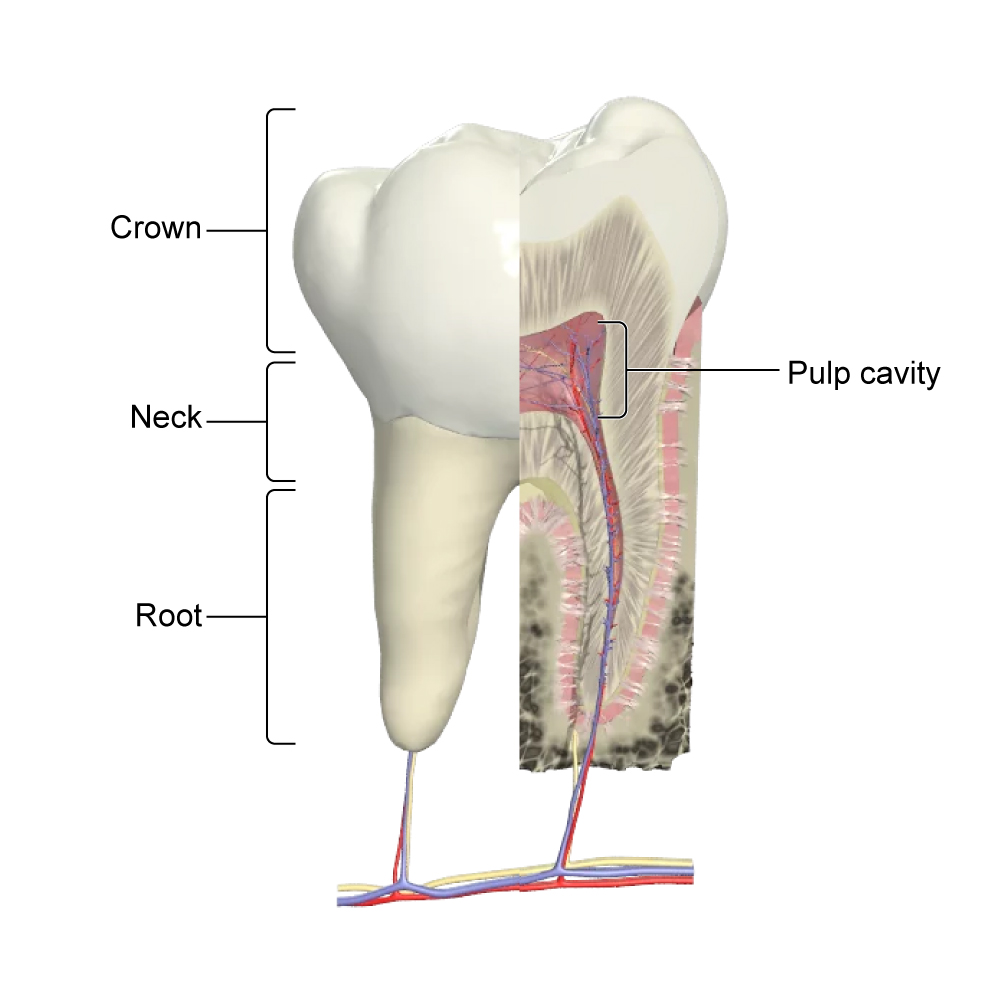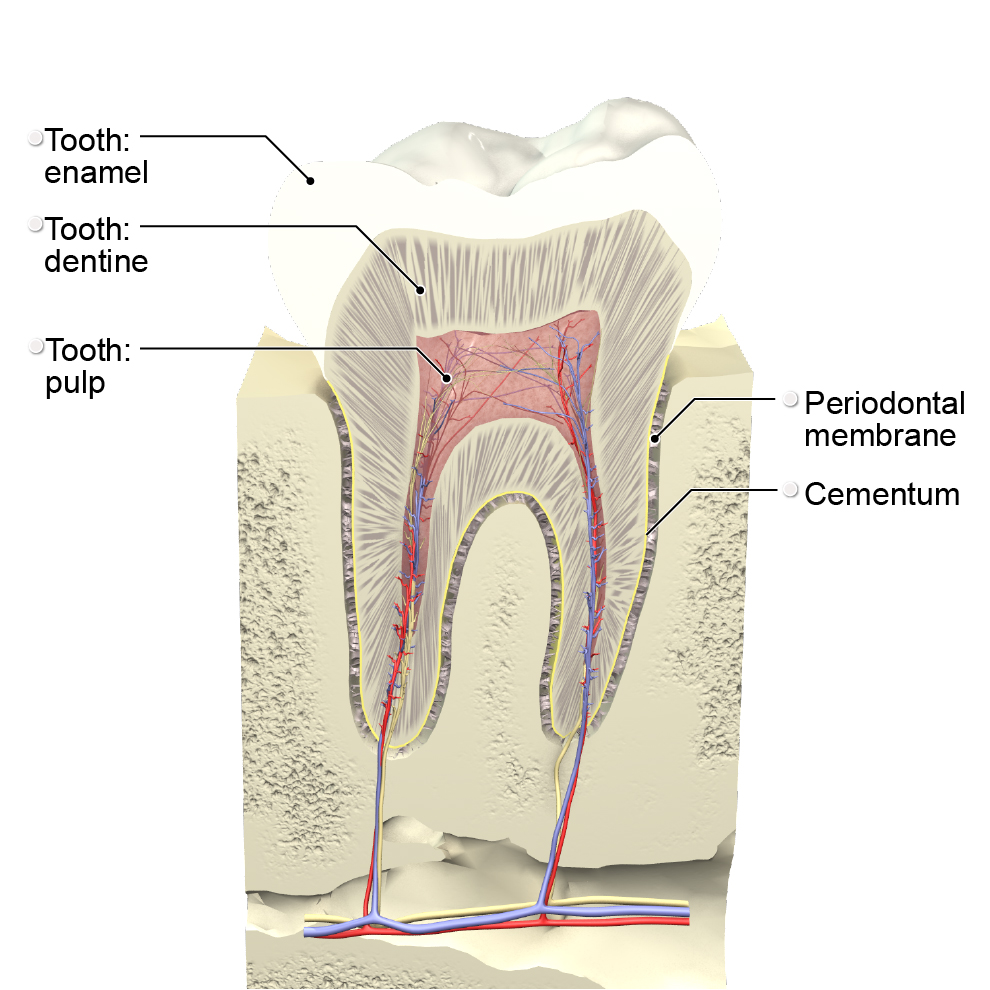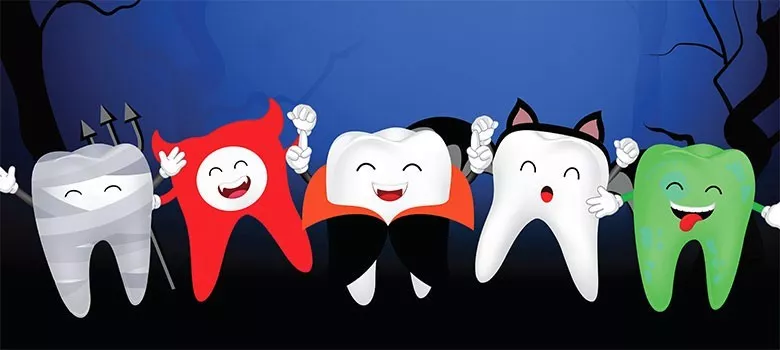There may be ghosts and witches out on Halloween night, but the scariest part is what happens to your teeth after eating one too many sweets! Let’s dig deep into the anatomy of the tooth and the effects of sugar, then find out what treatments help with recovery and lastly learn how we can keep our teeth healthy.
Not all sugar is bad, and our body is dependent on naturally occurring sugars (carbohydrates) to live. It gives our muscles energy and feeds our brain and nervous system. For example, fructose, which is a sugar found in fruit, gives us quick bursts of energy and also contains fiber which keeps our blood sugars stable. However, problems in dental health can occur when we eat excessive amounts of foods with added sugar.
What are teeth made of?
Throughout our lifetime we will grow two sets of teeth: baby (deciduous) teeth and adult (permanent) teeth. 20 baby teeth and 32 adult teeth are most common. These are split into four categories (incisors, canines, premolars, molars) and each serve different functions. Although the types of teeth are different the structure is the same:
-
- Crown – The part you can see as it projects above the gum line, with its shape determining whether the tooth is made for cutting, tearing or crushing.
- Neck – Sits between the crown and the root.
- Root – Holds the tooth in place in the jawbone.
- Pulp cavity – The space inside the crown that contains pulp.

Each part is made up of different substances:
-
- Enamel – Covers the crown, is the hardest part of the tooth (and hardest tissue in your body) and protects your tooth from bacteria.
- Dentin – A layer of tissue that sits below the enamel, covers the crown to the root and protects your tooth from heat and cold.
- Cementum – A tough yellow tissue that covers the root and is connected to the periodontal ligament, which keep your teeth in their sockets.
- Pulp – The nerves and blood vessels within the pulp cavity that nourish the dentin.

How sugar affects our teeth
Food and drinks with added sugar can be harmful to our teeth and cause dental caries (tooth decay), which can eventually turn into deep cavities. This study by the World Health Organization investigated the correlation between sugar and dental caries and recommended that sugar intake should be as low as possible to minimize the risk.
So, how does sugar cause dental caries? When bacteria in your mouth react with sugar it releases an acid that erodes the enamel and, if left unchecked, reaches the deeper layers of the tooth – the dentin and pulp. This process is called demineralization and can be painful and detrimental to your teeth. Thankfully our body has a natural defense against sugar. The saliva in our mouths help to wash away bacteria in a process called remineralization. Although, when demineralization occurs at a faster rate than remineralization it can cause dental caries.
The first sign of demineralization is darkened enamel, as bacteria affect the outer layer and color of the tooth. You might experience bad breath or an unpleasant taste in your mouth.
Next, a cavity can appear if the acid spreads to the inner layers of the tooth. This can reach nerves and blood vessels, resulting in tooth sensitivity and pain.

Infection of the pulp (pulpitis) can also occur, causing inflammation and pressure on the underlying root and bones of the tooth, which can worsen the pain.
If the infected pulp is not treated then pus can build up. Pus is made up of white blood cells, dead tissue and bacteria, and can form an abscess and accompanying swollen and tender gums.
Treatment for dental caries
A toothpaste containing 1350-1500 ppm fluoride helps in the fight against dental caries. Your dentist might also recommend fluoride mouth rinses or a fluoride varnish if you already have dental caries to support remineralization and prevent further decay.
The dentist can insert a filling to repair cavities or a crown to cover the whole tooth if it is cracked or if chewing is painful. If the cavity has spread to the deeper layers the dentist can perform root canal treatment, which removes any infected pulp and cleans and seals the hole to prevent reinfection.
If the dental caries are severe or other treatments are unsuccessful, then the whole tooth could be removed to be replaced with a denture, bridge or implant.
How to keep your teeth healthy
-
- Consume food and drink that are low in sugar to reduce the formation of dental caries and keep your whole body healthier.
- Brush twice a day, before bed and at one other time, with fluoride toothpaste. Be mindful not to rinse your mouth with water after brushing as this washes away the fluoride. It’s also essential to start brushing baby teeth as soon as they appear.
- Floss in between teeth to remove the build-up of plaque and debris.
- Schedule regular trips to the dentist to catch problems early, making them easier to treat.
Interested in learning more about Primal such as our Dental Education Solution or Disease & Conditions modules? Please fill in the form here and our team will be in touch.
